PROVINCETOWN — It was a dark Thursday afternoon with a squall moving in, the kind of conditions that might set the stage for the dramatic rescue of shipwrecked mariners but not for the rescue’s reenactment.
At Race Point Beach on July 25, a crew of 11 U.S. Life-Saving Service reenactors, clad in white jumpsuits, rubber gloves, and sailor caps monogrammed in gold threads, huddled under the Old Harbor Life-Saving Station waiting for the rain to subside.
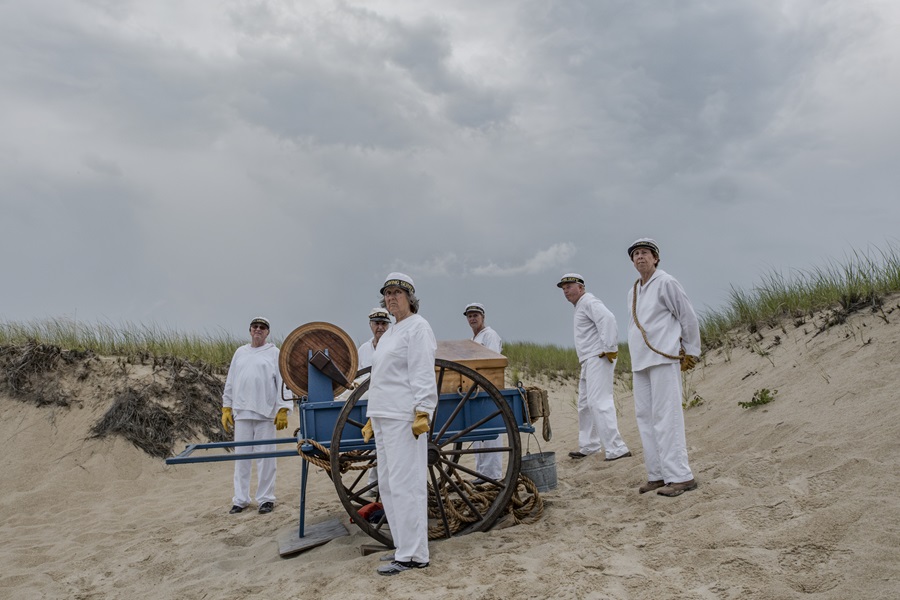
“We can’t let the ropes get wet,” said Lauren Noferi, a Cape Cod National Seashore park ranger who acts as the keeper, or captain, of the lifesaving surfmen. Both in and out of character, Noferi, along with Seashore educator Aleutia Scott, calls the shots.
“The irony is, they would have done it in the rain and snow,” Noferi said, “but we can’t.”
Every week in July and August, the same group of park rangers and hardy volunteers, composed of two married couples and a mother-daughter duo, gather to perform the beach apparatus drill, a rescue method used by the U.S. Life-Saving Service in the early 20th century that involves a cannon, a rope and pulley, and a pair of legless breeches sewed into a ring buoy.

From 1872 until 1915, when the U.S. Coast Guard was created, 13 lifesaving stations dotted the lip of the back shore of Cape Cod from Race Point to Monomoy Island in Chatham. Six to eight local men were stationed at each from August to May; they were paid $65 a month. For its tricky winds and shallow shoals, Cape Cod was known to mariners as the graveyard of the Atlantic: more than 3,000 ships have been wrecked on this coastline in 300 years of recorded history.
Surfmen of the day had to meet a range of qualifications from knowing how to operate a boat to resuscitating the “apparently drowned,” said Richard Ryder, a park ranger who narrates the reenactment along with Philip Keohan, both of whom had grandfathers in the service. A surfman could not have any connection to a wrecking company, the name for a group of tricksters known for luring ships to the treacherous shoals to salvage what was on board.
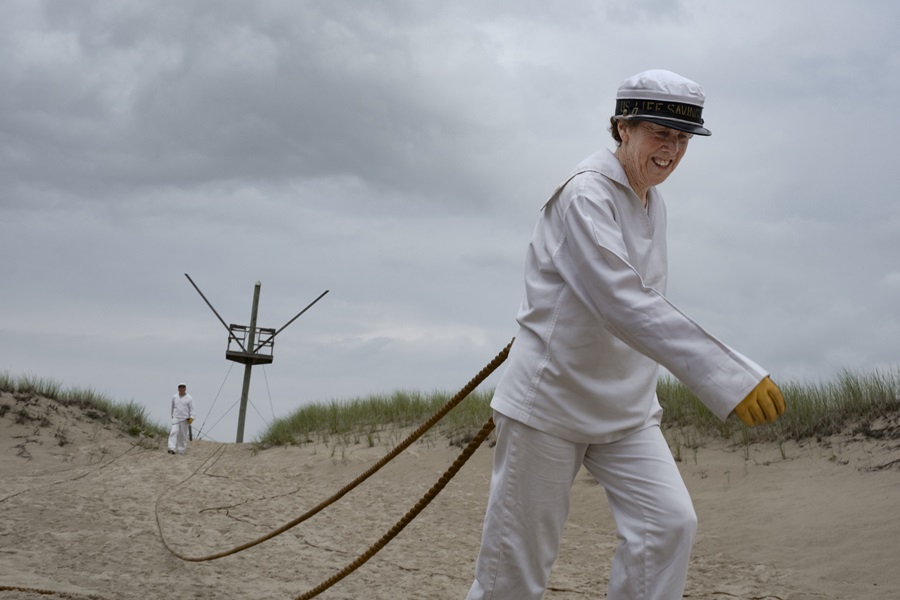
To become a surfman reenactor, however, one needs only a dedication to keeping the tradition alive and to do it as historically accurately as possible. “You are actually paying respect to somebody, so you want to do it well,” said Brian Cute of Eastham, who has returned for his second summer as a reenactor.
The Seashore has been doing the reenactments since 1981, said Noferi. The place-based history lessons are part of the Park’s summer programming, which also includes ranger-led field trips with lessons on coastal ecosystems. They take place on Thursday afternoons because the surfmen of the day rehearsed every Thursday, and townspeople would come out to watch.
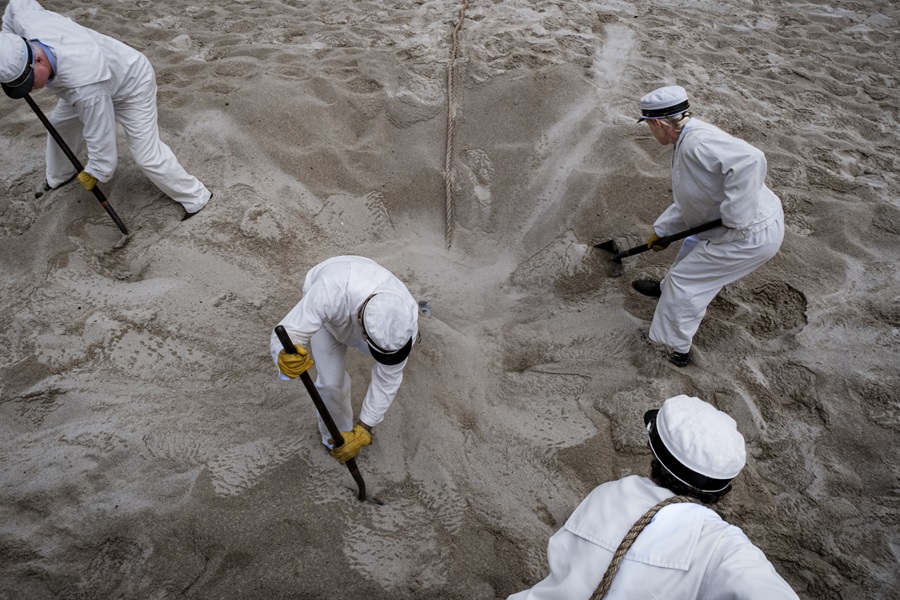
Once the sky cleared, the 75 or so people in the audience were instructed to yell, “Help!” and the reenactment began.
The reenactors use the official manual from 1883 to master the choreography of a rescue, and there are a lot of moving parts to the beach apparatus drill. “It’s like a three-ring circus,” Ryder said. The drill begins with the firing of a Lyle gun, a bronze cannon that shoots a projectile with a line attached.
“You might want to cover your ears or shut off your hearing aids,” Ryder said before a boom resounded, the cannon recoiled, and the projectile landed in a patch of rugosa roses, a little wide of its intended target. “That was the first time I remember missing a shot,” Wellfleet volunteer Jeff Tash said later, reflecting on the drill.
But the crew got to work right away, digging a hole in the sand for an anchor, to which they attached a hawser line that stretched from the ship’s mast to the sand. The surfmen then attached a pulley to the hawser, fastened the breeches buoy on it, and heaved the buoy to the ship. One by one, stranded sailors put their legs through the holes of the breeches and rode down the hawser as if it were a zip line.
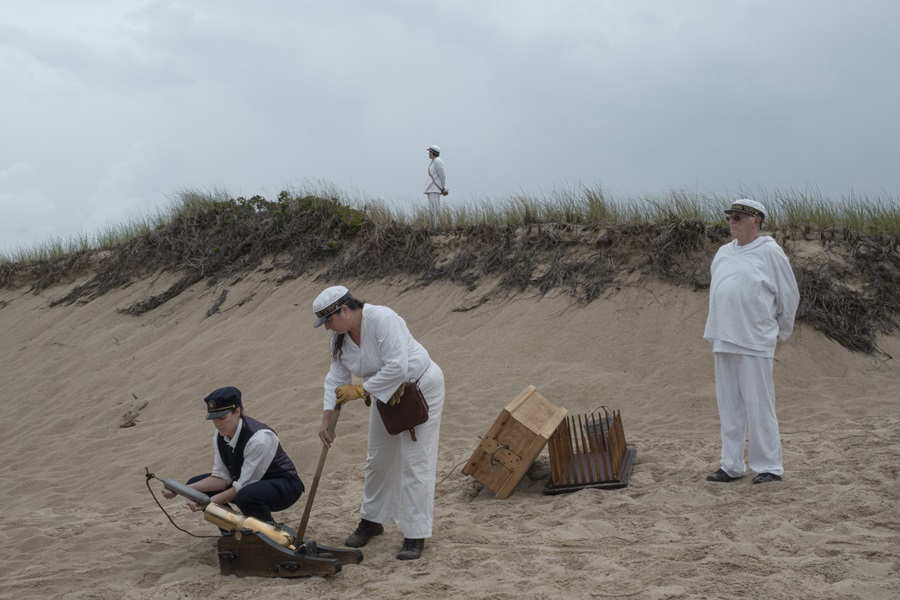
The reenactors diligently followed the keeper’s commands. When the keeper yelled, “Man the weather whip!” they manned the weather whip. When the keeper barked, “Man the crotch!” the crotch was manned. And when the keeper screamed, “Marry it!” they did what they were told — though what exactly any of it meant was known only to those who speak the esoteric language of the surfmen.
Back in the day, the whole operation lasted only five minutes. And although the drill took slightly longer for the reenactors, they looked as if they knew the stakes were as high as the real deal. According to the 1883 lifesaving manual: “Everything must be sacrificed to save life.” An unofficial qualification — more of a motto, Keohan said — was to know that “you have to go out, but you don’t have to come back.”
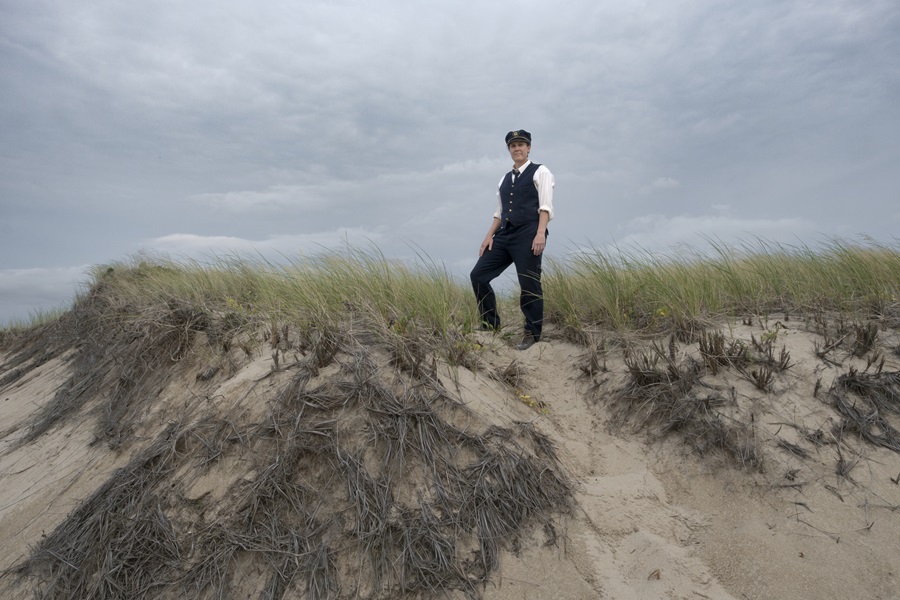
Make no mistake: the reenactors enjoy the work, they reassured a reporter after the show as they lounged on the bleachers and fanned the sweat from their jumpsuits. “This is what we do for fun in retirement,” said Marcia Bromley of Eastham.
According to Noferi, this year’s crew had rehearsed the rescue only five times before their first demonstration on July 18. But while for some volunteers it was all new, others have been surfmen for 25 summers.
“The word ‘hero’ is so overused these days, but these men were heroes,” Bromley said of the surfmen whose history she’s helping to keep alive. “They were selfless. Can you tell I’m gobsmacked by these men?”
Editor’s note: Because of a reporting error, an earlier version of this article, published in print on Aug. 8, misstated the last name of one of the park rangers who narrated the reenactment. It was Richard Ryder, not “Dyer.”



